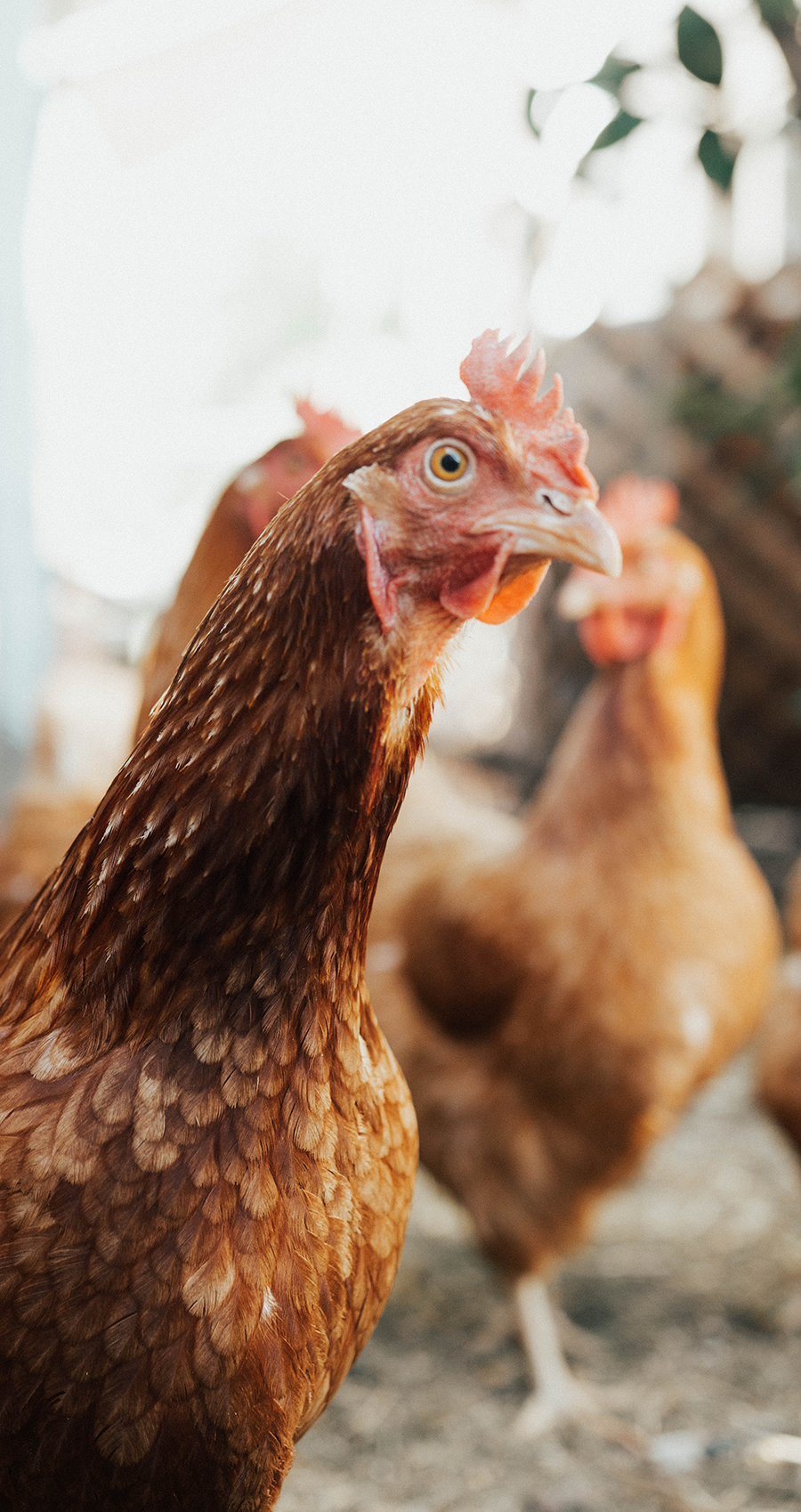why we do what we do
Key to our evolution is that we develop habits of connection that will last us the rest of our lives.
Here we explore the nature of habits: what they are, how they develop and how we can maximise the chances of a chosen behaviour becoming an effortlessly habitual part of our daily routine. We will put this in the context of the habits we’re trying to evoke and why we’re doing so.
the science of habits
– A behaviour is a sequence of actions that has a defined beginning, middle and end.
– A habit is a behavioural unit that is expressed without conscious thought. It is controlled by the basal ganglia, thus freeing up the cerebral cortex for conscious decision-making work that is not repetitive.
– Habits become more frequent if they lead to desired outcomes. Desired outcomes can be either the attainment of something ‘good’ or the avoidance of something ‘bad’.
– The definitions of ‘Good’ and ‘Bad’ are unique to the individual, but they trigger clearly measurable neurotransmitters of which dopamine is key to habit building, closely followed by Serotonin, Oxytocin and Endorphins.
– For habits to stick, they must be: easy, obvious, attainable, definable and rewarding.
– A fully formed habit has four parts: trigger, desire, action, reward


BUILDING A HABIT
If we are going to build a behaviour into a habit, then each of us has to work out what we find ‘easy, obvious, attainable, definable and rewarding’.
In this particular case, we want to be part of a movement towards conscious evolution. As a first step, we can break it down into component parts as we currently understand them: Awakening into Connection, Growing into Coherence, Asking for Help and Letting Go.
We’re defining the first of these as ‘making authentic heart connections to the natural world in order to be able to ask for help and hear answers that we believe and that are useful to us’
Even this is difficult to define, but it, too, can be split into smaller components, one of which is connecting to the elements. If we break this down into the component elements and examine these in the light of what might be easy, obvious, definable and so attainable, then water ranks first because it’s both ubiquitous – every day we will encounter fluid in some form (easy) – and intermittent – so we can learn to connect with it on the occasions when we come into contact with it, but we don’t have to remember to do so every second of the day (attainable).
We still need our habit to be obvious, definable and rewarding and we’re not there yet. In the end, we want to build relationships that are self-reinforcing (that’s one definition of a relationship), but we have to start from where we are, and if connecting to water is not in and of itself reinforcing for us, we may well need prompts to help us build the relationship.
To attain this, we have created a set of ‘water visualisations’ – short audio files that you can download and listen to on a daily basis. This then becomes the first solid habit we want to build: listening daily to the water visualisations.
But even listening to a 5-minute file every morning is a fairly big step and one of the absolute principles of habit building is that we split the desired behaviours down into the tiniest component parts possible. To achieve this, we have broken the audio files down to a single note – the final point of the recordings. From there, we can work our way back to the complete audio file.
THE WONDERS OF BACK CHAINING
This makes use of a behavioural technique called ‘back chaining’.
If I want to instil in my dog the habit/behaviour of finding eggs the chickens have laid in the undergrowth and bringing them back to me, then I start by offering a reinforcement (usually food) when she’s sitting in front of me holding an egg in her mouth.
When she reliably takes the egg from me, sits, and spits it out into my hand, I can start with the egg at a distance. If she runs from me, picks it up, runs back and sits in front of me waiting for the reinforcement, then I’m on the way. Give it long enough and she’s a completely manic egg-seeker.
[note: This works, I promise. The only problem is that she has a tendency now to stand over the hens begging them to lay faster and they find this somewhat distracting. And yes, for the extreme geeks, I’ve started some way into this behaviour – if we really started from the beginning, I’d be teaching the ‘sit in front of me’ behaviour first, then ‘take an egg’.]
If we bring this back to the task at hand, our first goal is to listen to the sound of a chime once per day. This is an easy, obvious, definable, attainable goal, building in obvious, easy, definable steps to the next goal which is listening to the longer audio… and on until we’re listening to the full ‘water visualisation’ for the week.
Real behavioural geeks may want to split this down even further into stages of lifting the phone up, then switching it on, then sliding earbuds into ears. If you’d like really to experiment with the power of splitting rather than lumping, please feel free to do this. If you think you’d like to get to listening to the actual audio file a little faster, it’s not essential.


The nature of reinforcement
So we have an easy, obvious, definable and attainable unit of behaviour. But to stick, habits must be rewarding. To get to this, we need to look again at some of the rules of behaviour.
- All behaviours begin as neutral explorations.
- If any given behaviour develops a history of being paired with ‘good things happening’ and/or ‘bad things going away’ then it will be repeated more frequently when the surroundings suggest that it will be useful/appropriate.
The key, therefore, is to find out what constitutes ‘good’ and ‘bad’ and making sure it follows the behaviour.
As we’ve said, ‘good’ and ‘bad’ things are unique to the individual. My dog finds dried cat food enormously reinforcing but if I mix up my pocket habit (right = dogs & cats, left = ponies) and offer the wrong thing to the ponies, then they – quite reasonably – react as if I’ve tried to poison them and the behaviour I was hoping to mark is definitely not reinforced. On a more human level, I get migraines if I go anywhere near alcohol, so it counts as an inhibitor rather than a reinforcer on just about every level. Ditto sugar, chocolate and music in all forms. For most people, any or all of these would act as a reinforcer while Marmite (which I love) may well be an inhibitor.
Clearly, we’re all wired differently, but the responses themselves are fairly uniform. On the whole, our brains are hardwired to seek four basic reinforcing neurotransmitters.
Dopamine – “I got it!” (achievement)
Endorphins – “I did it!” (exhilaration/physical success)
Serotonin – “I’m the best!” (pride in the approval of those I love and respect)
Oxytocin – “I’m loved!” (deepening connection to those I love and respect)
This is a basic list, and I’m sure more will be discovered as work continues, but even so, quite a broad spread of the gamut of human behaviour are covered by these four – particularly the strands that can be tweaked to promote and maintain habits.
DOPAMINE – the achievement reinforcer
‘I got it!’
Of the four, Dopamine is top of the list – the ‘it’ we get covers everything from food and drink, to sex, to a sun lounger, to cocaine, to a Facebook ‘like’ or the sight of our favoured team/political party being elevated above the opposition. [note: the dopamine hit we get when our political party is proved right and the opposition proved wrong is as powerful as the first hit of cocaine. Political partisanship is addictive.]
So, Dopamine is a primary driver of our likes and our addictions. The post-docs employed by the social media companies to keep us maximally addicted to our tablets and smartphones are feeding us dopamine in regularly irregular shots that are more or less guaranteed to keep us coming back. Addiction to social media isn’t a side effect, it’s the whole point.
[note: Conversely a company in the US, ‘Boundless Mind’, is endeavouring to find ways to use dopamine to break our addictions to those same smartphones and social media. I don’t know how they’re doing this, but I’m watching with interest.]
If we want to create good habits, then knowing what ticks our own dopamine boxes is a useful starting point. Then you need to build a list of things that are reinforcing for you and pick five of them and use them as reinforcers. If we can randomise them so that we know ‘something good’ is coming, but don’t know exactly what it is, we’ll maximise the effect: randomising reinforcement is one of the best ways to drive habits. This is why slot machines and computer games are so addictive – good things will happen but we can’t exactly predict the timing or the magnitude, so we keep striving for more.


SERATONIN – the approval reinforcer
‘I’m the best!’
Serotonin is the ‘pride hormone’ (amongst other things). We’re all hard wired to seek the approval and respect of our peers. This encourages us to strive to be our best in the eyes of those around us and so bonds our tribal group together. On the African savannah, when our tribes were the entire world, we lived, loved, foraged, (occasionally hunted), played, danced, gossiped, intrigued, created and enacted our spirituality together. These days, I may do all of these with separate groups whose overlaps may be small to non-existent. This can lead to a degree of confusion as we strive to find a sense of pride in belonging in all of them (which leads us to become depressed and give up).
Note that ‘work’ didn’t arise in the list of things we did together in our tribes. We are not hard wired to work. We are hard wired to provide and care for ourselves and those we care about. It’s only very, very recently in the evolution of consciousness that ‘work’ has become something we a) have to do in order to fulfil the role of provider and b) is something in which it might be possible to take pride (read Davide Graeber’s Bullshit jobs for an indication of those in which it will be almost impossible to take any pride). Thus, the old traditional mindset which suggested that everyone needed to have a job in order to have a decent sense of self regard is wrong. If you have a vocational job that you love and at which you can flourish, it will certainly pump out the serotonin. But so will being an amazing volunteer who keeps the foodbanks running so that the local homeless don’t go hungry; or calling out the perfect heckle at a political meeting that leaves the side you support happy; or being a good healer in a battlefield in World of Warcraft where you save your team’s flag carrier for the win. Each of these carries the promise of pride in a moment’s success and a job well done and fulfils our need for serotonin.
ENDORPHINS – the exhileration/physical success reinforcer
‘I did it!’
Endorphins tend to be released when we make powerful physical effort: topping out after a hard route up a rock cliff; cycling to work when it’s uphill all the way, running to catch a train… any kind of aerobic activity is pretty much guaranteed to release endorphins.
But so is a real belly laugh – or thinking rapidly about a number of different things. And given the recent work where those who imagined lifting weights saw an increase in muscle mass that was 80% of those who actually lifted the weights, I suspect it’s possible to stimulate endorphin release by playing a computer game where we feel as if we’re racing across a desert (or whatever), though I haven’t yet found any references to this.


OXytocin – the love and respect reinforcer
‘I’m loved!’
Oxytocin is the hormone of close connection and bonding. When I was at vet school, the only thing they knew about oxytocin was that it was released by the female of any species at orgasm, during parturition and during the expression phase of lactation. Since then, we’ve discovered that oxytocin lights up the brains of the male just as much as it does the female (if under slightly different circumstances) and that any emotionally close encounter releases oxytocin as long as its harmonious and meaningful. This is the hormone that brings us together and promotes our tribal bonding. We can also evoke oxytocin by genuine self-love. This is one of the hardest things we ever do and it’s not hard to think of people who have gone from birth to death without ever genuinely loving themselves. It’s worth striving for, though.
In this regard, we need to look at intrinsic and extrinsic reinforcers. In the realm of habit-formation, extrinsic reinforcement is something that comes from the outside: chocolate, or marmite, or new shoes, or anything we can go out and buy. Intrinsic reinforcement is that which arises from within us and it has the advantage that it’s with us all the time if we’ve learned how to access it (see self-love, above). It can also trigger more than simply dopamine. If I can evoke a real sense of ‘I did it!’ with self-congratulation, that’s a start, but if I can also imagine that I will gain love and support and respect a peer group that I value, then I have a chance of evoking serotonin and oxytocin too. This is one of the several reasons why we’re encouraging a sense of community around the Accidental gods project: if this can become our peer group then we can give each other genuine support and the anticipation of that support can become a real reinforcer of our habits.
As a final reinforcer, I am finding that imagining the feeling of conscious evolution as best I can is enormously reinforcing and is keeping me at my desk and writing long after I might otherwise want to go and light the fire and relax. Keeping this particular light burning bright on the horizon is a final gigantic – if distant – anticipated reward. Which leads us to…
Anticipation as the ultimate reinforcer
One of the interesting things to come out of the neuroscience of habits and their uncontrolled half-siblings, addictions, is that while a particular reinforcer may trigger dopamine release in and of itself, pretty soon, we find that the dopamine surge arises before the actual delivery.
In real terms, the first time someone offered you a square of chocolate, you didn’t feel the dopamine until you ate it. But pretty soon, the dopamine peaked when you saw chocolate. And then when you simply thought about it. This phenomenon is one key to habit formation – because anticipation is one step from desire and it’s the desire (aka craving) that makes habits really stick.
Thus, in the Habits Handbook, we will investigate the triggers that leave us with the feeling of magical, joyful anticipation – as if of Christmas morning – and see if we can set that up as a dominant feeling as we begin our visualisations. This builds on the fact that the anticipation of opening presents is often far, far more potent than the actual action of opening them – and if we can re-create that sense of vast potential, it becomes its own reinforcer. If we can also cultivate a sense of satisfaction and genuine, heartfelt self-congratulation at the end of our visualisations and combine this with an anticipation of congratulations from our peer group for having done it, then these, too, will further reinforce our practice. Put together, this combination will set our new habit up to become as effortless as brushing our teeth or making coffee. All we need to do then is to pick the right time in our lives to do it and set up the environmental triggers to make it easy and obvious. [This is covered in depth in the Habit Workbook.]


Hebbian plasticity – what fires together, wires together
One final critical part of our toolkit is what’s known as Hebbian plasticity after Donald Hebbs, who first described the fact that neuronal pathways that are used frequently, become used even more frequently. In current parlance that translates as, ‘What fires together wires together.’ Things that we do become things that we do again. And again. This is critical to everything we’re doing in Accidental Gods. It’s the foundation of the understanding that human beings have the ability to rewire our own brains/minds.
[note – we’re not assuming these two are the same. The hard problem of consciousness remains hard and a source of utter fascination. We can – and will – spend a lot of time looking at the links – or otherwise – between our brains and our minds. But not just now.]
We can choose what to think. We can choose what to feel. And having done so, we can choose to keep thinking/feeling these things and we will enhance the pathways that are involved in the thinking and the flood of neurotransmitters that are involved in the feeling. The results of that are huge and will take up a whole other handbook, possibly an entire rack of handbooks. But just as a taster, if we spend half an hour a day really feeling compassion for ourselves and the world, our telomeres lengthen. Telomeres are the bits of protein coiled like Slinkies at the ends of our DNA which shorten as we age. Their shortening, in fact, defines our ageing. If they lengthen, we become biologically younger. Ergo, a sustained burst of genuine compassion for self and others can slow, halt or even reverse the ageing process. What’s not to like?)
So – we have our habit broken down into its component parts. It’s easy, obvious, desirable and attainable. We know how to create intrinsic and extrinsic reinforcements so that it’s rewarding. We know its component parts – the trigger, the craving, the action and the reward and we know how best to fold these into behaviour chains that will make it seem effortless.
All we need now, is actually to do it.